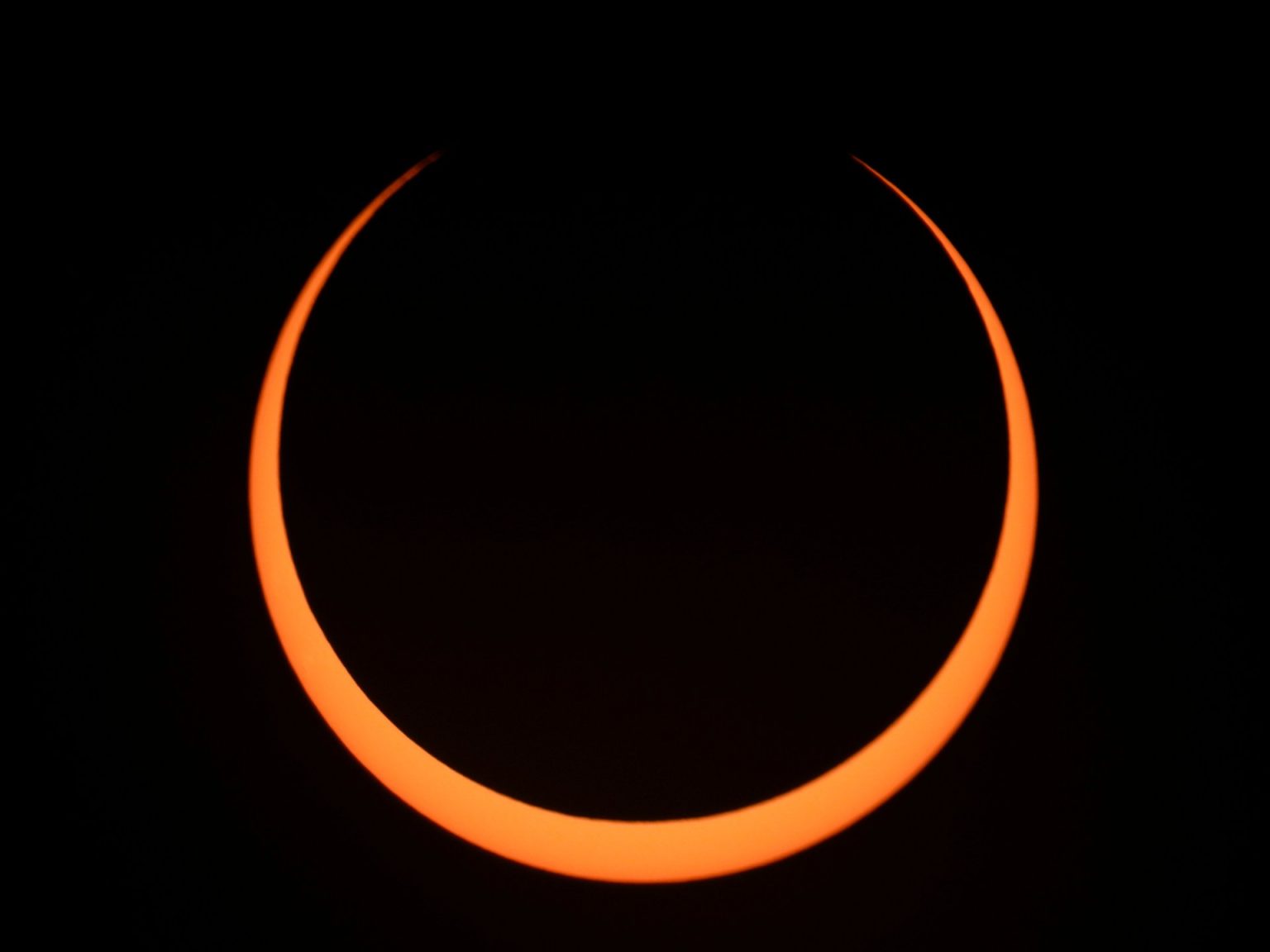On October 3, 2024, an annular solar eclipse, also known as the “ring of fire,” was visible in parts of South America and Pacific islands. During this rare event, the moon passed between the Earth and the sun, creating a dark silhouette with a bright halo surrounding it. This phenomenon occurs when the moon is too far from the Earth to completely cover the sun, resulting in a ring of sunlight around the edges of the moon.
In South America, countries such as Chile, Argentina, and Uruguay experienced the eclipse, with people gathering to witness this unique natural event. In the Pacific islands, regions like French Polynesia and the Cook Islands also had a view of the eclipse. The “ring of fire” effect occurs when the sun, moon, and Earth are perfectly aligned, allowing for the moon to partially block out the sun’s rays. This creates a stunning visual display where the sun’s corona is visible as a luminous ring around the darkened moon.
Solar eclipses are not only a visual spectacle but also provide scientists with an opportunity to study the sun’s corona and other solar phenomena. Researchers are able to observe the sun’s outer atmosphere and gather data to better understand solar activity and its potential impact on Earth. The “ring of fire” eclipse of October 3, 2024, offered astronomers and enthusiasts a chance to witness this celestial event and capture valuable information about the sun’s behavior.
Due to the unique geometry of an annular eclipse, where the moon does not completely cover the sun, observers are able to see the sun’s outer layers and study phenomena such as solar flares and prominences. This type of eclipse allows for detailed observations of the sun’s corona, which is usually obscured by the brightness of the sun’s surface. By studying these outer layers, scientists can gather insights into solar activity and its influence on space weather.
In addition to its scientific importance, solar eclipses hold cultural and spiritual significance for many people around the world. Ancient civilizations often interpreted eclipses as omens or signs from the gods, and modern cultures continue to view these events with awe and reverence. The “ring of fire” eclipse of October 3, 2024, provided a moment of wonder and reflection for those who were able to witness the celestial display, reminding us of the beauty and power of the natural world.
Overall, the annular solar eclipse of October 3, 2024, offered a rare opportunity for people in South America and the Pacific islands to witness the captivating “ring of fire” effect. This celestial event not only provided a visual spectacle but also allowed scientists to gather valuable data about the sun’s corona and solar activity. As observers marveled at the dark silhouette surrounded by a bright halo, they were reminded of the beauty and mystery of the universe, underscoring the ongoing fascination with solar eclipses and their enduring impact on human culture and scientific understanding.


